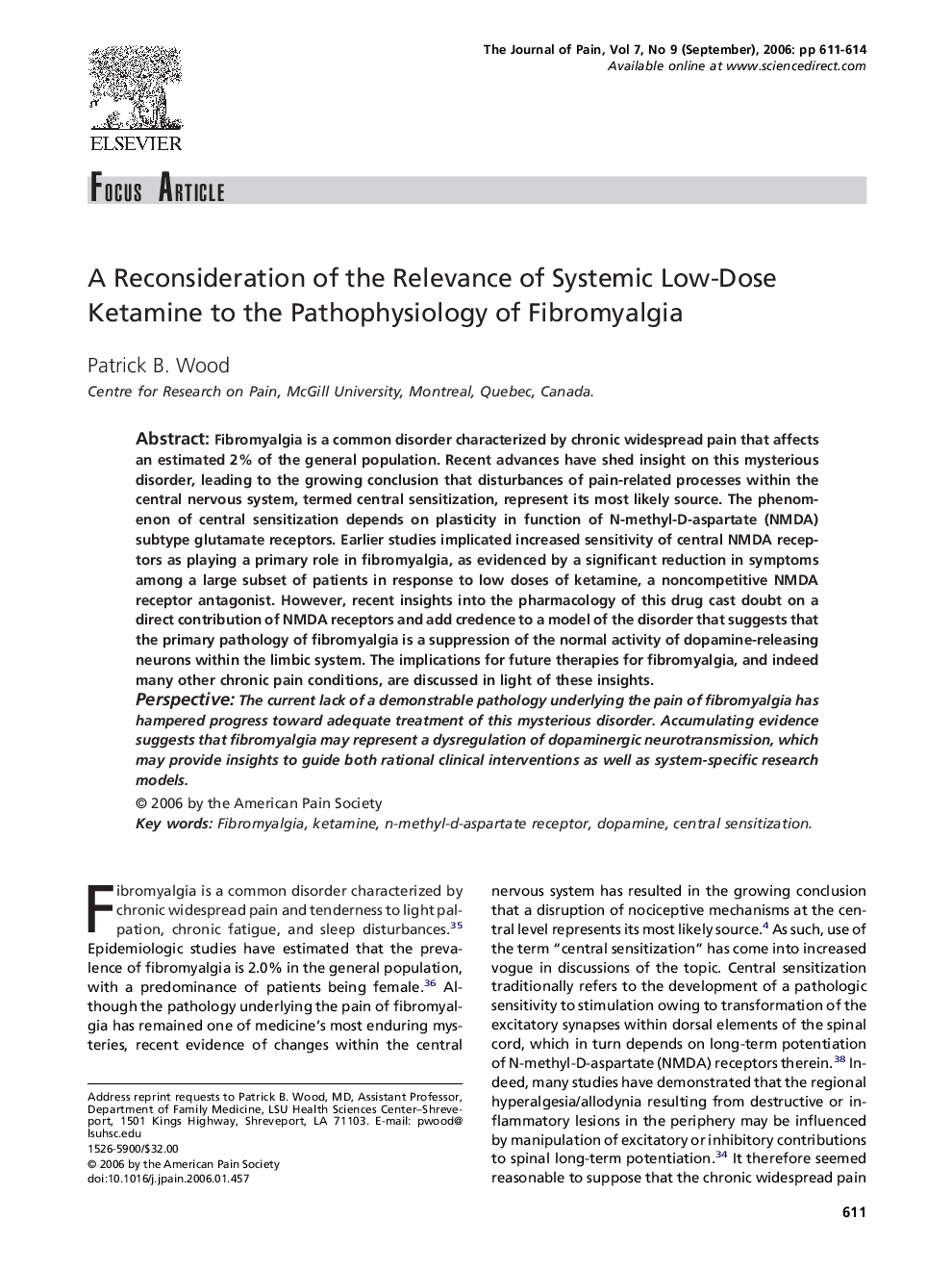| Article ID | Journal | Published Year | Pages | File Type |
|---|---|---|---|---|
| 2729688 | The Journal of Pain | 2006 | 4 Pages |
Fibromyalgia is a common disorder characterized by chronic widespread pain that affects an estimated 2% of the general population. Recent advances have shed insight on this mysterious disorder, leading to the growing conclusion that disturbances of pain-related processes within the central nervous system, termed central sensitization, represent its most likely source. The phenomenon of central sensitization depends on plasticity in function of N-methyl-D-aspartate (NMDA) subtype glutamate receptors. Earlier studies implicated increased sensitivity of central NMDA receptors as playing a primary role in fibromyalgia, as evidenced by a significant reduction in symptoms among a large subset of patients in response to low doses of ketamine, a noncompetitive NMDA receptor antagonist. However, recent insights into the pharmacology of this drug cast doubt on a direct contribution of NMDA receptors and add credence to a model of the disorder that suggests that the primary pathology of fibromyalgia is a suppression of the normal activity of dopamine-releasing neurons within the limbic system. The implications for future therapies for fibromyalgia, and indeed many other chronic pain conditions, are discussed in light of these insights.PerspectiveThe current lack of a demonstrable pathology underlying the pain of fibromyalgia has hampered progress toward adequate treatment of this mysterious disorder. Accumulating evidence suggests that fibromyalgia may represent a dysregulation of dopaminergic neurotransmission, which may provide insights to guide both rational clinical interventions as well as system-specific research models.
